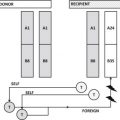

Our goal in this issue of Hematology/Oncology Clinics of North America dedicated to Transfusion Medicine is to present practical and clinically relevant reviews on topics reflecting the current state of Immunohematology, Blood Banking, and Apheresis. Some of our chosen authors are Internists and others are Pediatricians; some are trained in Pathology/Laboratory Medicine, and others are trained in Hematology/Oncology. All are experts in Transfusion Medicine. The topics chosen include evidence-based studies of RBC, platelet, and plasma transfusion; special considerations for transfusion of pediatric or adult patients with oncologic diseases or hemoglobinopathies; management of the platelet refractory patient; approach and management of patients with microangiopathic hemolytic anemias; interpretation of immunohematologic testing; relevance of autoantibodies and alloantibodies detected in Hematology/Oncology patients; considerations of blood product modifications; adverse sequelae of transfusion; and stem cell mobilization and collection.
Despite continued improvements in transfusion safety, much room remains for additional optimization of transfusion management and strategies, particularly for Hematology/Oncology patients. Such optimization will require an interdisciplinary approach involving Transfusion Medicine/Apheresis and Hematology/Oncology providers alike. Areas ripe for optimization include those that further increase transfusion safety, those that conserve limited resources (taking personnel, blood product, and economic resources into consideration), and those that explore poorly understood or little studied areas of practice. This issue not only draws into focus advancements that have been made in practice but also highlights outstanding questions that remain to be answered.
As the editors of this special issue, we are extremely grateful to Dr Frank Bunn and Elsevier for their appreciation of the role of Transfusion Medicine in Hematology/Oncology practice, and for their help in making this work a reality. We would also like to express our thanks to the authors for their dedication to Transfusion Medicine, for their willingness to share their expertise, and for taking on the task of composing brief yet thorough articles with Hematology/Oncology clinicians in mind. We hope that a better understanding of current issues in Transfusion Medicine will strengthen future studies and will ultimately improve care for Hematology/Oncology patients.
Stay updated, free articles. Join our Telegram channel

Full access? Get Clinical Tree





